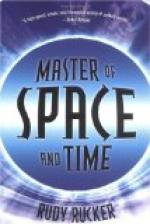But conduction and induction combined would not carry messages to a distance that would enable extensive communication. A new medium had yet to be found, and this was the work of Heinrich Hertz, a young German scientist. He was experimenting with two flat coils of wire, as had many others before him, but one of the coils had a small gap in it. Passing the discharge from a condenser into this coil, Hertz discovered that the spark caused when the current jumped the gap set up electrical vibrations that excited powerful currents in the other coil. These currents were noticeable, though the coils were a very considerable distance apart. Thus Hertz had found out how to send out electrical waves that would travel to a considerable distance.
What was the medium that carried these waves? This was the question that Hertz asked himself, and the answer was, the ether. We know that light will pass through a vacuum, and these electric waves would do likewise. It was evident that they did not pass through the air. The answer, as evolved by Hertz and approved by other scientists, is that they travel through the ether, a strange substance which pervades all space. Hertz discovered that light and his electrical waves traveled at the same speed, and so deduced that light consists of electrical vibrations in the ether.
With the knowledge that this all-pervading ether would carry electric waves at the speed of light, that the waves could be set up by the discharge of a spark across a spark-gap in a coil, and that they could be received in another coil in resonance with the first, the establishment of a practical wireless telegraph was not far away.
XVI
AN ITALIAN BOY’S WORK
The Italian Youth who Dreamed
Wonderful Dreams—His Studies—Early
Detectors—Marconi
Seeks an Efficient Detector—Devises New
Sending
Methods—The Wireless
Telegraph Takes Form—Experimental Success.
With the nineteenth century approaching its close, man had discovered that the electric waves would travel through the ether; he had learned something of how to propagate those waves, and something of how to receive them. But no one had yet been able to combine these discoveries in practical form, to apply them to the task of carrying messages, to make the improvements necessary to make them available for use at considerable distances. Though many mature scientists had devoted themselves to the problem, it remained for a youth to solve it. The youth was Guglielmo Marconi, an Italian.




